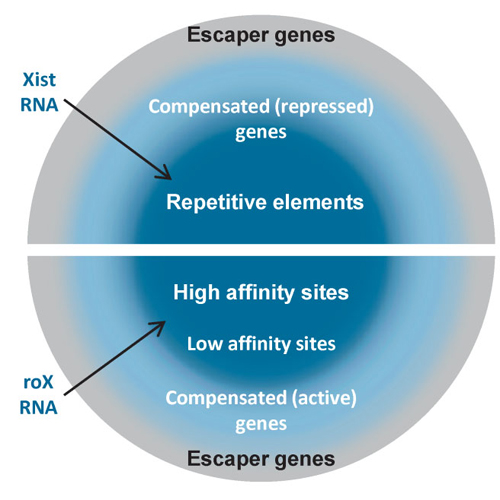Form and function of dosage-compensated chromosomes – a chicken-and-egg relationship
20-Jul-2010
BioEssays, 2010, Volume 32, Issue 8, pages 709–717, August 2010, DOI: 10.1002/bies.201000029 published on 20.07.2010
BioEssays, online article
Does the three-dimensional (3D) conformation of interphase chromosomes merely reflect their function or does it actively contribute to gene regulation? The analysis of sex chromosomes that are subject to chromosome-wide dosage compensation processes promises new insight into this question. Chromosome conformations ar dynamic and largely determined by association of distant chromosomal loci in the nuclear space or by their anchoring to the nuclear envelope, effectively generating chromatin loops. The type and extent of such interactions depend on chromatin-bound transcription regulators and therefore reflects function. Dosage compensation adjusts the overall transcription activity of X chromosomes to assure balanced expression in the two sexes. Initial analyses of mammalian and Drosophila X chromosomes have led to the hypothesis that their conformations may not only reflect their functional state but may in turn contribute to the coordination of chromosome-wide tuning of transcription.











